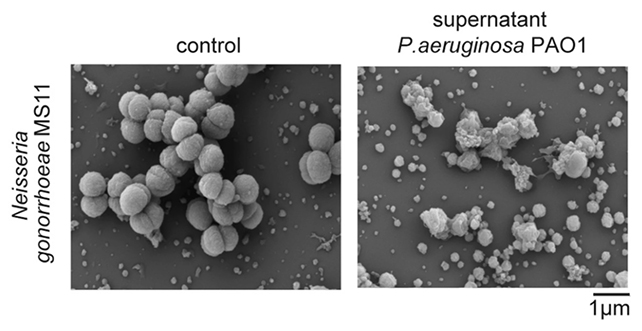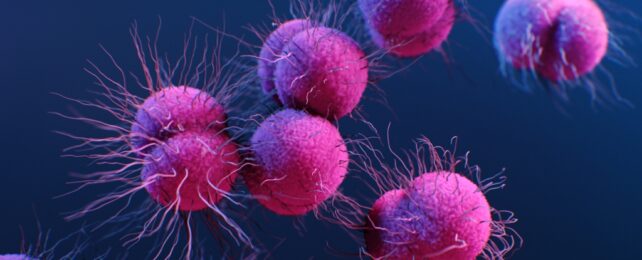Some strains of Neisseria gonorrhoeae, the bacteria that causes the sexually transmitted infection (STI) gonorrhea, have evolved to be resistant to most modern drugs. However, we may now have a new class of antibiotic to use as a weapon against the bacteria.
According to the team, led by researchers from the University of Konstanz in Germany and the University of Vienna in Austria, what makes the newly identified compound so effective is that it launches a self-destruct sequence inside N. gonorrhoeae (also known as gonococci).
The researchers started by looking at a group of alkyl quinolones (AQs), substances that some bacteria use to help trigger attack and defense mechanisms against other bacteria. As well as analyzing these AQs, the team synthesized new variations in the lab.

"One of these new AQ molecules actually did have a unique effect," says cell biologist Christof Hauck, from the University of Konstanz. "The chemical compound was able to kill gonococci without having a negative impact on other microorganisms or human cells."
That chemical compound was 2-nonyl-4-quinolone N-oxide or NQNO, which is taken from the Pseudomonas aeruginosa bacteria. In experiments, it was shown to block the growth of N. gonorrhoeae, stopping the bug in its tracks.
More specifically, NQNO stops the electron transport chain inside gonococci, an essential part of the energy production process in cells. That then leads to increased stress on the bacteria, which causes one of its own toxins to appear and kill itself off.
Even better, tests run by the researchers show that the compound doesn't harm some other, beneficial bacteria that can be found in the body. In mice models, the NQNO treatment was shown to be effective against gonorrhea, and the researchers were also able to create a more potent and effective version of it with some chemical engineering.
"From other microorganisms, we know about such self-destruction programs based on toxin-antitoxin systems, and our AQ substance seems to precisely target this Achilles heel of gonococci," says microbiologist Ann-Kathrin Mix, from the University of Konstanz.
N. gonorrhoeae is infamous enough that it's found a place on the Bacterial Priority Pathogens List put together by the World Health Organization (WHO), a 15-strong rogues gallery of the most dangerous superbugs.
Part of the challenge in combating it is that it has a special superpower: being able to pick and choose genetic material from other microbes that the bacteria comes into contact with, including genes that promote antibiotic resistance.
Work continues to combat gonorrhea and the tens of millions of infections it causes globally every year, and while it's still early days for this new treatment possibility, it could help us stay ahead of the rapidly evolving defenses of N. gonorrhoeae.
"Gonococci are notorious for quickly becoming resistant to antibiotics," says microbial biochemist Thomas Böttcher, from the University of Vienna.
"This is one of the reasons why gonococcal strains have recently emerged that are resistant to all antibiotics currently in use – such superbugs can no longer be treated with antibiotics."
The research has been published in Nature Microbiology.
